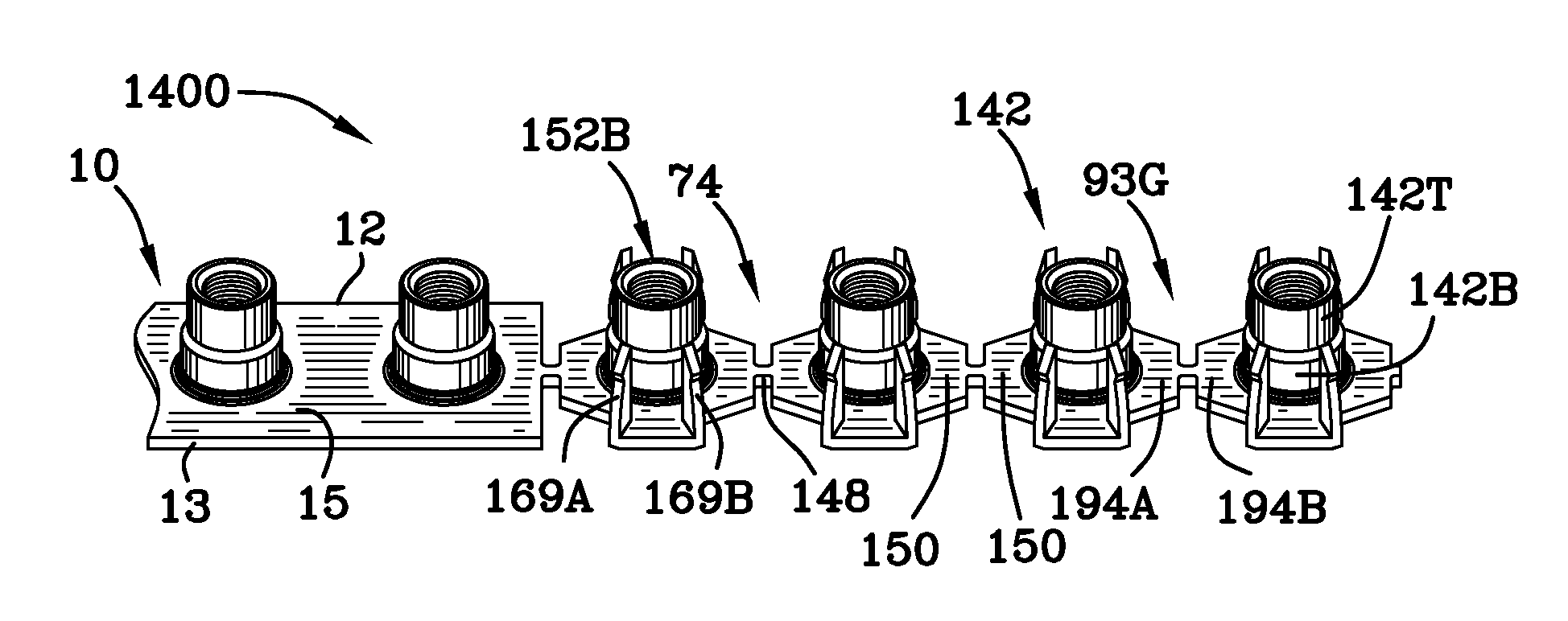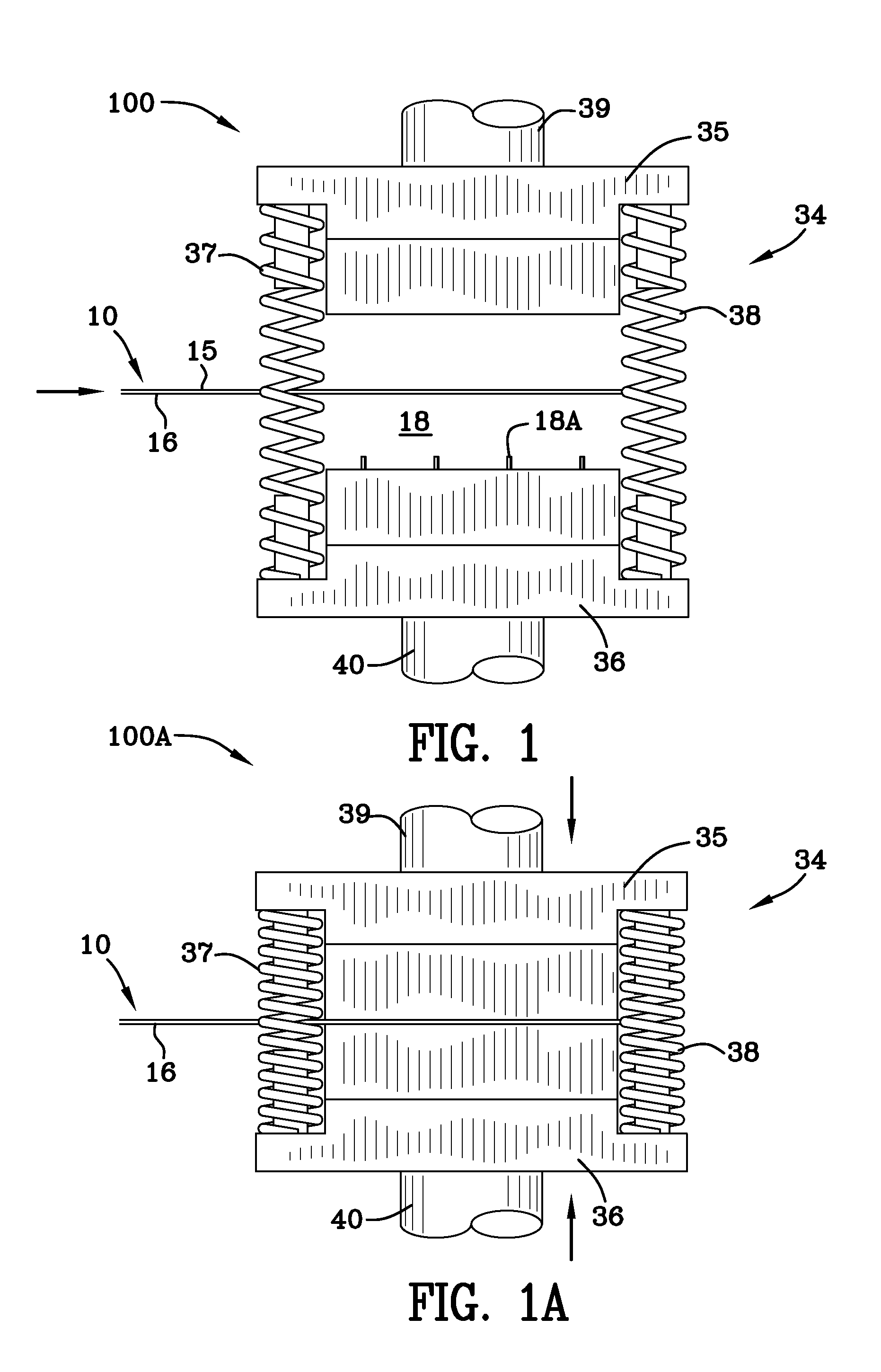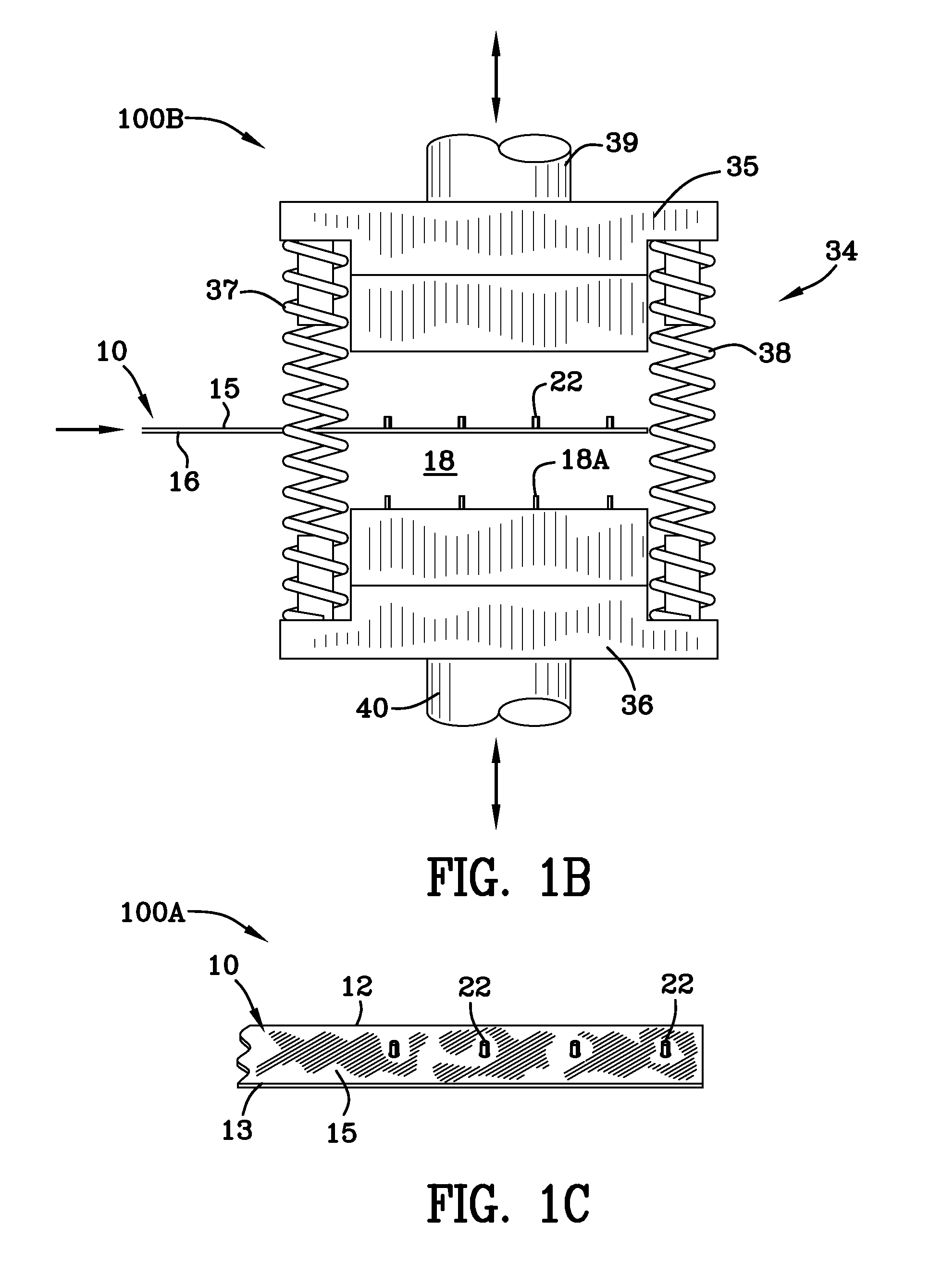Method of manufacturing collated t-nuts
a technology of collated t-nuts and collated t-nuts, which is applied in the field of collated t-nuts, can solve the problems of affecting the adhesive properties of tape, t-nuts can easily become detached or ‘unstuck’ from tape, and the taped t-nuts on the coil do not withstand impact well, so as to facilitate the installation process of the fastener
- Summary
- Abstract
- Description
- Claims
- Application Information
AI Technical Summary
Benefits of technology
Problems solved by technology
Method used
Image
Examples
Embodiment Construction
[0120]Reference may be had to FIG. 4 for a quick understanding of the continuous strip of collated T-Nuts of the invention. The continuous strip comprises T-Nuts integrally connected together and spaced apart for later dispensation in a substrate. The integrally connected T-Nuts are formed on and from a continuous steel strip 10. The strip shown in FIG. 4 has been identified by the reference numeral 33. Put another way, reference numeral 33 identifies one example of the completed product, namely, a strip of collated T-Nuts with flanges and parts linked together by carry tabs and frangible portions. As stated previously, the carry tabs may be frangible or portions of the carry tabs may be frangible. The strip of deformable metal material 10 (FIG. 1) has first and second side portions 12, 13 and top and bottom portions 15, 16 and is fed into a first die station 18 (FIGS. 1, 1A, 1B) which is housed in press 34. FIGS. 1, 1A and 1B illustrate a die press at a first die station 18 in thre...
PUM
| Property | Measurement | Unit |
|---|---|---|
| thicknesses | aaaaa | aaaaa |
| thicknesses | aaaaa | aaaaa |
| widths | aaaaa | aaaaa |
Abstract
Description
Claims
Application Information
 Login to View More
Login to View More - R&D
- Intellectual Property
- Life Sciences
- Materials
- Tech Scout
- Unparalleled Data Quality
- Higher Quality Content
- 60% Fewer Hallucinations
Browse by: Latest US Patents, China's latest patents, Technical Efficacy Thesaurus, Application Domain, Technology Topic, Popular Technical Reports.
© 2025 PatSnap. All rights reserved.Legal|Privacy policy|Modern Slavery Act Transparency Statement|Sitemap|About US| Contact US: help@patsnap.com



